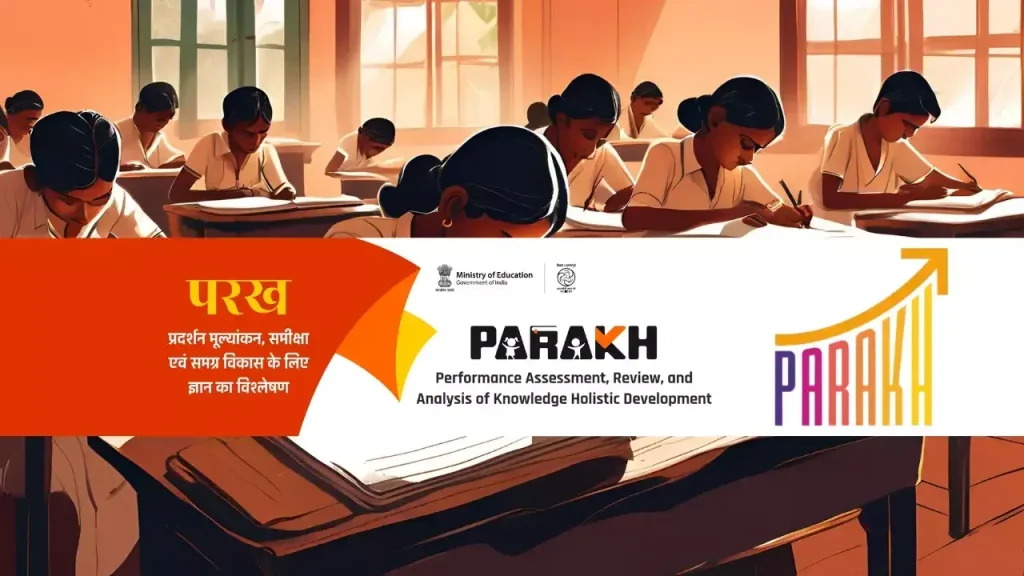Syllabus:
GS1: Issues Relating to Development and Management of Social Sector/Services relating to Health, Education, Human Resources.
Context:
Recently, the Centre’s latest school education assessment has been released,the PARAKH Rashtriya Sarvekshan 2024 which has offered valuable insights into learning outcomes across the country.
More on the News
- The PARAKH Rashtriya Sarvekshan, which was called the National Achievement Survey (NAS) in previous iterations, assessed 21.15 lakh students in Classes 3, 6, and 9 across 74,229 schools in December 2024, reflecting the key stages of the foundational, preparatory and middle levels outlined in the National Education Policy (NEP) 2020.
- The 2017 NAS included Classes 3, 5, and 8, while 2021 covered Classes 3, 5, 8 and 10.
- Since, the assessment aligns with NEP 2020 stages, only Grade 3 results can be directly compared across all three cycles—NAS 2017, 2021 and PRS 2024.
- Comparison of Grade 6 and 9 scores with Grade 5 and 8 scores from previous rounds of NAS is likely to result in spurious conclusions due to change in the structure of the large-scale assessment.
- Only Class 3 results are directly comparable across the rounds, as it is the sole grade common to the 2017, 2021, and 2024 assessments.
PARAKH Rashtriya Sarvekshan 2024
- It is conducted by NCERT’s National Assessment Centre—PARAKH (Performance Assessment, Review and Analysis of Knowledge for Holistic Development), the survey marks India’s largest-ever student assessment at the system level.
- In PARAKH Rashtriya Sarvekshan 2024, students from Grade 3, Grade 6, and Grade 9 will be evaluated across different subjects and competency areas:
- At Grade 3, learners will be evaluated in foundational stage competencies, and the assessment time will be 90 minutes.
- At Grade 6, learners will be evaluated in Language, Mathematics, The World Around Us (TWAU) and the assessment time will be 90 minutes.
- At Grade 9, learners will be evaluated in Language, Mathematics, Science, and Social Science and the Assessment time for them will be 120 minutes.
Significance
- Competency-Based–Based Assessment: By assessing not just individual students but entire schools, we gain insights into the strengths and weaknesses of our educational systems in regard to stage-specific competencies. This allows for targeted improvements that benefit all students.
- Data-Driven Policy Making: The insights derived from this comprehensive survey will be invaluable in shaping educational policies and reforms, ensuring they are grounded in real-world data.
- Alignment with NEP 2020: This initiative embodies the principles of the National Education Policy, fostering an inclusive, equitable, and holistic approach to education in India.
- Empowerment of Educators: With data-driven insights, teachers and administrators will be better equipped to enhance their pedagogical practices and address the diverse needs of their students.
Key Findings
- The findings show a promising picture, especially at the foundational level.
- In language, girls scored slightly higher than boys, with an average score of 65%, compared to 63% for boys. In Mathematics, both genders scored 60% on average.
- Interestingly, rural students performed marginally better than urban peers, and State Government schools topped performance in Grade 3—showcasing the early success of the NIPUN Bharat Mission.
- However, Class 3 is still not caught up with the performance recorded in 2017.
- They were assessed in language and Mathematics and fared better compared to 2021.
- Recorded an average national score of 64% in language in 2024, a two-percentage-point increase from 62% in 2021, but lower than the 2017 score of 66.7%.
- Scored lowest (60%) in reading comprehension and highest (67%) in using language for daily interactions.
- As students progress through the preparatory and middle stages, Central Government schools emerged as high performers. However, urban-rural and gender gaps continue to highlight the need for targeted interventions.
- For Classes 6 and 9, average scores were below 50% in all subjects except language.
- The survey also points to urgent improvements needed in Mathematics and Science at higher grades, while advocating for more inclusive and gender-sensitive teaching approaches.
- Feedback from over 2.7 lakh teachers and school leaders has shed light on broader educational conditions, including the use of digital tools and student mental well-being.
- However, concerns were raised about emotional stress among adolescents and the limited accessibility for Children with Special Needs (CWSN), which call for immediate systemic response.

